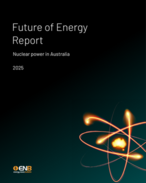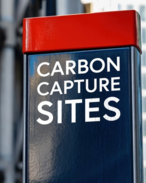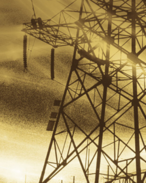This article is 9 years old. Images might not display.
The field, about 200km north of Perth right on the Dampier-to-Bunbury and Parmelia pipelines, now has a low contingent resource estimate of 2.5 trillion cubic feet of gas-in-place, twice that assessed by Gaffney, Cline & Associates based on the two original wells, prior to WA's biggest gas user, Alcoa, signing up for a $100 million farm-in to earn 65%.
RISC Advisory has calculated that, based on the results of Warro-5 and Warro-6, that there could be as much as 11.6Tcf of GIP, an increase of 15% on the earlier Shanley Review, which suggested options for developing the troublesome field.
RISC says the total recoverable gas resource of between 2.6-5.4Tcf, which is far in excess of the 50-75 billion cubic feet minimum economic field size.
Even at the lower P90 level, if Transerv can establish commercial flow rates, Warro would easily be the largest single gas field developed in the Perth Basin, and potentially the largest gas field developed onshore in Australia.
Managing director Stephen Keenihan told Energy News yesterday that the company still needs to confirm sustained commercial flow rates before it pops the champagne, but it now knows there is a lot of gas at Warro to extract if it can tease the gas from the Yarragadee Sandstone.
He said the deeper gas was not necessarily a surprise, because there was always gas in the bottom of the hole in the company's earlier Warro-3 and Warro-4 wells, however the company had chosen to be conservative with its resource figures because tight gas fields can be tricky.
"You never know how far you can follow that gas down," he said.
"We had stepped out looking for the gas-water contact before and never found it, so we still don't know how deep it goes.
"It may be that there is more of a permeability trap system. These unconventional styles of traps often have unusual styles, they don't follow the normal riles and sometimes they just peter out without a define contact.
"In addition to these strong results, there is huge potential for further increases in the Warro resource because we were still in gas when we stopped drilling the two latest wells," he said.
"Another 100m of gas column would translate into a further 700Bcf to 4.1Tcf of GIP. This is significant because both the size and the reliability of the resource are central to the economic potential of the field."
The company had originally modelled that each well could recover some 4-10 billion cubic feet per well based on a drilled on a 20-hectare spacing, and used conservative ultimate recoveries of 4.4Bcf per well to determine an unrisked recoverable resources of 3.8Tcf (P50).
The company hopes to have flow results next year, and has reasons to be hopeful. Flows in the earlier wells, while inhibited by water breakthrough, suggest that with the right frac technique around four million cubic feet per day would be achievable.'
With commerciality established, Alcoa and Transerv would the look at an additional 2-3 wells, to support a small plant and spur pipeline.
It could then expand the plant using modular components as the market requires.
Keenihan said Warro could not only be valuable in the domgas market, for customers such as Alcoa, but it could also be a highly valuable source of offset gas for the global LNG companies operating in WA.
Under existing WA government policy, LNG companies must reserve 15% of the gas they control in WA for domestic use. However, by acquiring an interest in a gas field such as Warro, they can source this gas from elsewhere in WA to meet their 15% obligation, meaning the fields which underpin their LNG projects can be used solely for export.
Fields such as Warro have been developed in the USA, but in the 40 years since its discovery the Perth Basin tight gas field has proved a difficult beast to tame.
The Jonah field in Wyoming is an analogue, and it remains a geological puzzle, but with each step, Transerv and Alcoa move closer to unlocking a significant gas resource outside Perth that, together with the new Waitsia field discovered by AWE, could transform the WA domgas market.
Based on recent valuations of the field by Breakaway Research and Strachan Corporate, Warro could be valued at between $900 million and $3.7 billion.






















